Homeland Partner Securewire Technologies Serves as 2024 Trilogy of Trust Sponsor
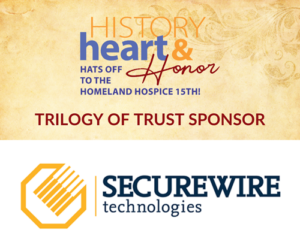 An anniversary is more than commemorating the passage of time. It is a celebration of the people and relationships that have made each year special. As Homeland Hospice celebrated its 15th anniversary with its “History, Heart & Honor… Hats off to the Homeland Hospice 15th” event on Saturday, November 23, we honored and thanked Securewire Technologies for serving as Homeland’s 2024 Trilogy of Trust sponsor.
An anniversary is more than commemorating the passage of time. It is a celebration of the people and relationships that have made each year special. As Homeland Hospice celebrated its 15th anniversary with its “History, Heart & Honor… Hats off to the Homeland Hospice 15th” event on Saturday, November 23, we honored and thanked Securewire Technologies for serving as Homeland’s 2024 Trilogy of Trust sponsor.
As Homeland’s 2024 Trilogy of Trust sponsor, Securewire Technologies supported Homeland’s three signature events throughout the year. In addition to Homeland Hospice’s 15th anniversary event, Securewire Technologies also sponsored Homeland’s 1867 Society Appreciation Reception in May and the 2024 Homeland Hospice 5K in September.
These events would not have been possible without the generosity and support of Securewire Technologies. Not only do the events help connect the community to the meaningful work of Homeland, but they also raise much needed funds to support Homeland Center’s benevolent care program. Homeland provides approximately $4 million in benevolent care annually to ensure all residents, patients and clients receive high-quality, supportive care when they need it most.
Homeland’s relationship with Securewire Technologies started last fall when Kelly English, Homeland’s Director of Emergency Preparedness and Purchasing, connected with Bob Light, owner of Securewire Technologies. Securewire Technologies was selected to upgrade Homeland’s security systems. The partnership grew beyond a business transaction as both organizations found a shared mission in providing the best care possible for families in need.
“Giving back to others is a priority for Bob,” Kelly says. “Securewire has truly gone above and beyond to support Homeland.”
Bob was eager to say “yes” to the opportunity to support Homeland’s three signature events in 2024. As the Trilogy of Trust sponsor, Securewire Technologies donated $35,000 for Homeland’s events.
“In many ways, our organizations are kindred spirits,” Bob says. “We both care for families during difficult times.”
In addition to the meaningful donation of funds, Bob and several Securewire Technologies employees have attended Homeland events, including Homeland’s Annual 5K and Memory Walk. Both organizations treat customers like family and strive to provide outstanding, compassionate servic
Thanks to Bob and Securewire, Homeland’s event season has provided remarkable opportunities for families and the community to better understand the work of Homeland and the hospice philosophy.
“We are humbled and honored to be part of Homeland’s work,” Bob adds. “Helping one another is how we make our community a better place to live.”
For more information about Homeland’s events, visit www.homelandcenter.org and homelandathome.org.

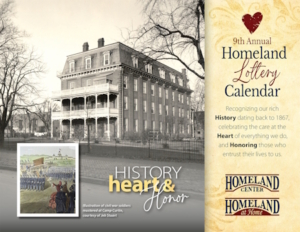
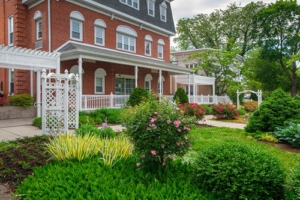 Homeland Center, a licensed not-for-profit Continuing Care Retirement Community occupying a full block in uptown Harrisburg, has been named a
Homeland Center, a licensed not-for-profit Continuing Care Retirement Community occupying a full block in uptown Harrisburg, has been named a 
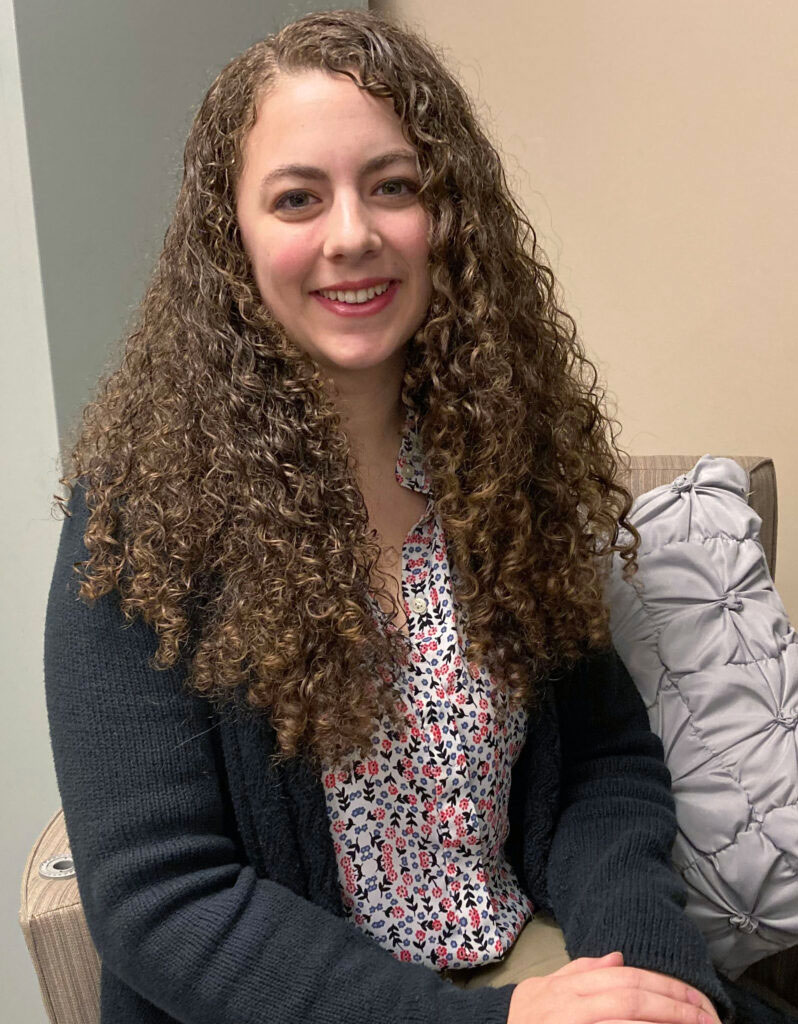
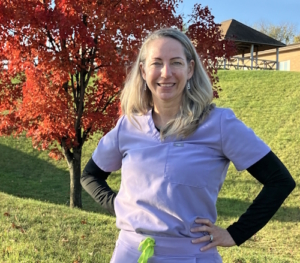 Angie Bucci of Shippensburg has a heart for hospice work. She enjoys connecting with her patients and their families to provide the most compassionate care possible. For more than 12 years she has worked as a Certified Nursing Assistant (CNA) for Homeland Hospice, a nonprofit hospice program that serves communities throughout central Pennsylvania. For Angie, her career is not about a job to do. It is an opportunity to connect with others to profoundly change a person’s life through kindness and support.
Angie Bucci of Shippensburg has a heart for hospice work. She enjoys connecting with her patients and their families to provide the most compassionate care possible. For more than 12 years she has worked as a Certified Nursing Assistant (CNA) for Homeland Hospice, a nonprofit hospice program that serves communities throughout central Pennsylvania. For Angie, her career is not about a job to do. It is an opportunity to connect with others to profoundly change a person’s life through kindness and support.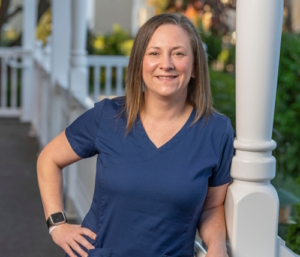 When Aimee Schmoltze’s mother began receiving hospice care, she saw the impact of the program on their family. Over a 14-month period, Aimee, her mother and their family developed emotional bonds with the hospice staff who provided compassionate care during a very difficult time. This was a formative experience for Aimee. Amidst her grief, she felt called to the work of hospice. Today, Aimee is a registered nurse and case manager for Homeland Hospice, a nonprofit hospice program that serves communities throughout Central Pennsylvania.
When Aimee Schmoltze’s mother began receiving hospice care, she saw the impact of the program on their family. Over a 14-month period, Aimee, her mother and their family developed emotional bonds with the hospice staff who provided compassionate care during a very difficult time. This was a formative experience for Aimee. Amidst her grief, she felt called to the work of hospice. Today, Aimee is a registered nurse and case manager for Homeland Hospice, a nonprofit hospice program that serves communities throughout Central Pennsylvania.
